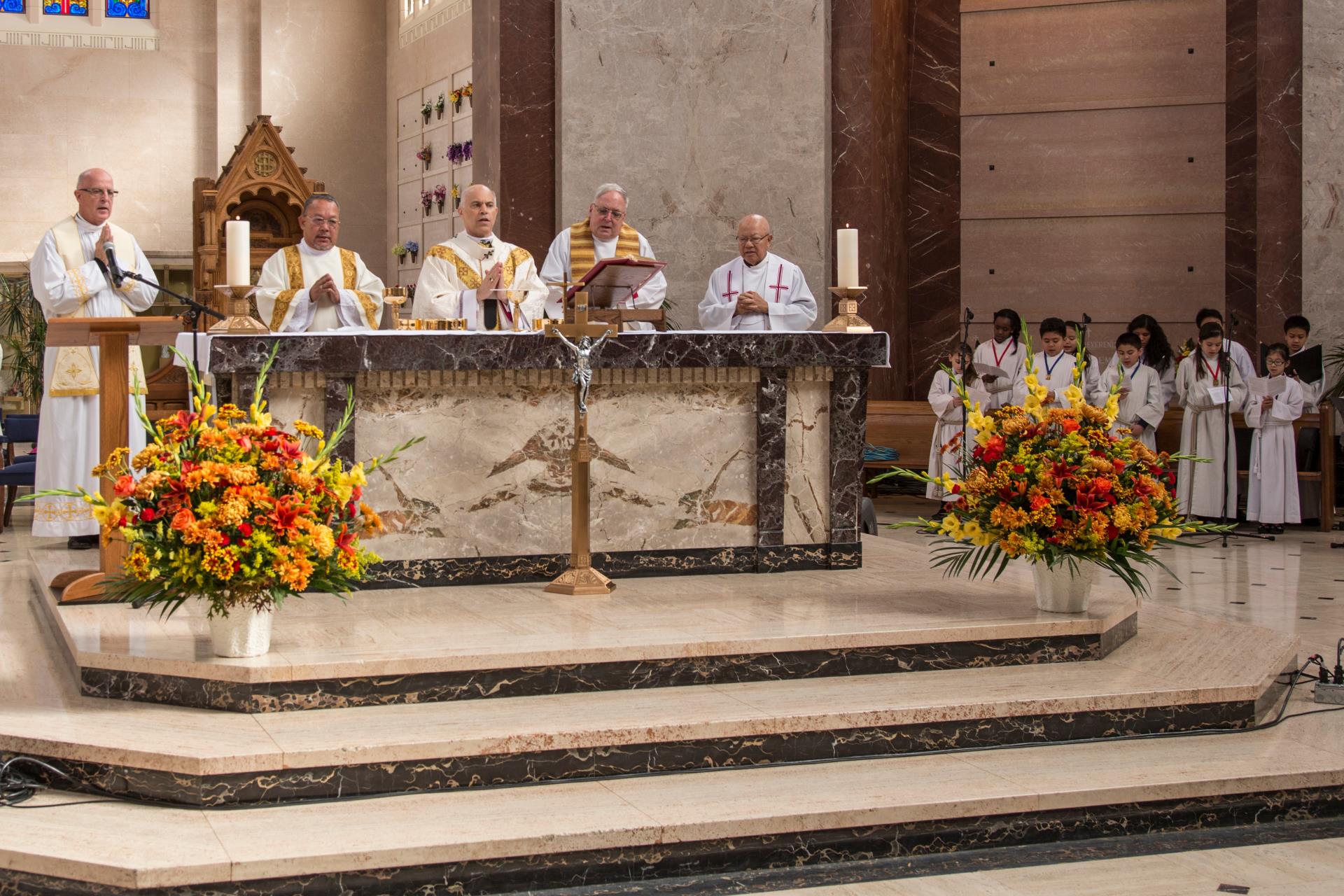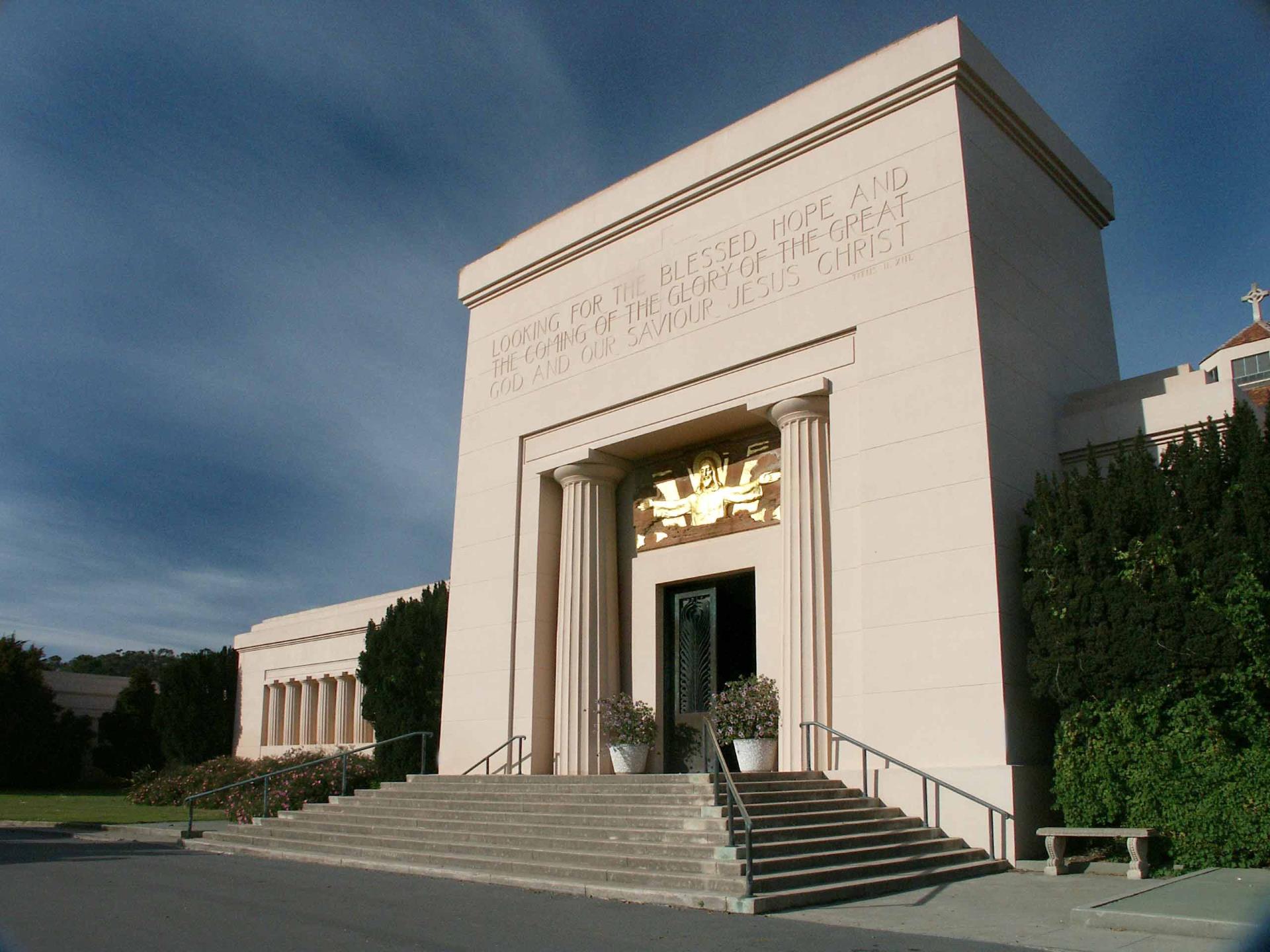What is Cremation?
Cremation is the reduction of the body of the deceased to recoverable fragments through a process, which combines intense heat, and evaporation to create dry, purified remains. The fragments are then finely ground and referred to as “cremated remains.”
Cremation Options
- In ground burial in cremation gardens. This option provides for the cremated remains to be placed in a protective and commemorative urn and buried with the same ritual as a traditional burial.
- Outdoor and Indoor Marble niches are available for those who prefer placement above the ground. These beautiful niches provide attractive, protected spaces with memorialization.
- Glass Front Niches available in the All Saints Mausoleum allow for a personal touch. Many choose to place a photo or rosary in the niche with the urn.
- Cremated remains may be placed in an existing family grave or crypt when space and burial rights allow.
- Those who value family history and genealogy will be glad to know that placing cremated remains in Holy Cross provides for proper long term care. A permanent location with complete documentation affords family members assurance future generations will be able to identify and access important family relationships and histories.
What Services Are Available for Those Choosing Cremation?
Ideally, the vigil service and funeral Mass are offered with the body present. After the funeral Mass, the deceased is taken to the crematory by the Funeral Director. After cremation, the cremated remains are brought to the cemetery for burial or entombment. If cremation takes place immediately after death, Archdiocesan Policy on cremation states that the funeral Mass may be conducted with the cremated remains present in the church. In either case, the family may wish to have a committal service at the time the cremated remains are placed in the cemetery.
What funeral rites are celebrated when a person is cremated?
All the usual rites, which are celebrated with a body present, may also be celebrated in the presence of cremated remains. The United States’ bishops have written new prayers and have printed them as an appendix to the Order of Christian Funerals. During the liturgies, the cremated remains are treated with the same dignity and respect as the body.

The following rituals may be celebrated

Prayers after Death — This ritual is used immediately after death in the home or the hospital. The presence of the priest or deacon, the readings and the prayers can be of great comfort to the family.
Gathering in the Presence of the Body — This ritual can also be of great comfort to family members and friends. It allows for a time of simple prayer and shared silence.
Vigil for the Deceased — If cremation has already taken place, friends and family may still gather to pray. While it has been a tradition to pray the rosary in some regions, the vigil for the deceased is celebrated in a “Liturgy of the Word” service. These include prayer for the deceased and recognition of his/her Christian life.
Is it necessary to embalm the body for cremation?
When cremation follows the funeral liturgy, embalming is usually necessary. When cremation follows soon after death, embalming is not necessary. California State Law dictates that a deceased human body that is not buried or cremated within 24 hours must be refrigerated or embalmed. Embalming and the use of a cremation casket need not involve excessive costs.
Is it necessary to purchase a casket for cremation?
Crematories require that the body be placed into a container in which the body can be transported and placed into the cremation chamber. This can be a simple cardboard box or a special cremation casket. If you would like to have the body of the deceased available for Mass, you may wish to purchase a special cremation casket or some funeral directors offer a rental casket. In these cases, cremation follows the Mass.
Do I have to honor the deceased’s wishes to cremate them?
Typically, out of respect for your loved one, it is important to carry out the last wishes of the deceased related to funeral and burial services as long as they coincide with Church tradition. It is often a good compromise to have the body cremated after the full funeral liturgy with the body present. This allows you to honor the wishes of the deceased while providing family and friends the privilege of honoring the departed within the context of the Mass.
Does Holy Cross Bury Cremated Remains?
Yes, in 1963 the Catholic Church eliminated its prohibition against cremation. Cremation represents a means of disposition preferred by many Catholics. It is important to remember that cremated remains are still the body of the deceased, just in a different form. For this reason they should be treated with the same respect as the full body of the departed. There are many compelling reasons to place cremated remains in a niche, a grave or mausoleum on Holy Cross grounds. Honoring and respecting the deceased by keeping their remains safe, undisturbed and in a place where family members can visit to pay their respects generations later represents a critical factor for most families.

